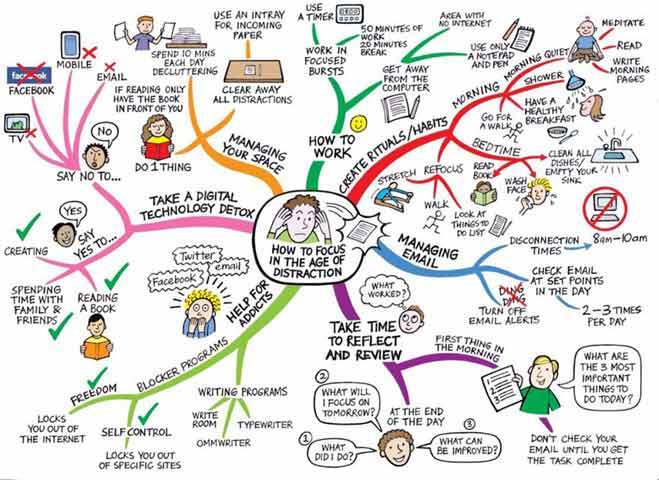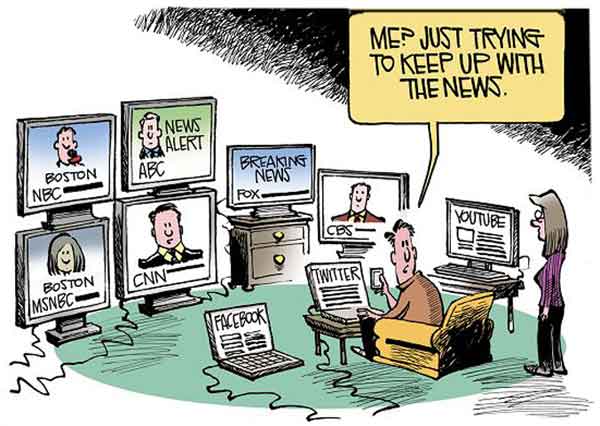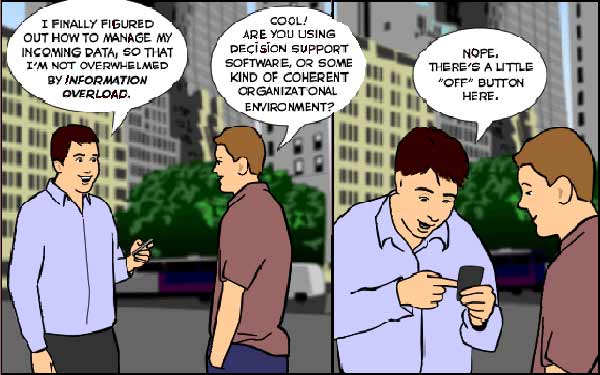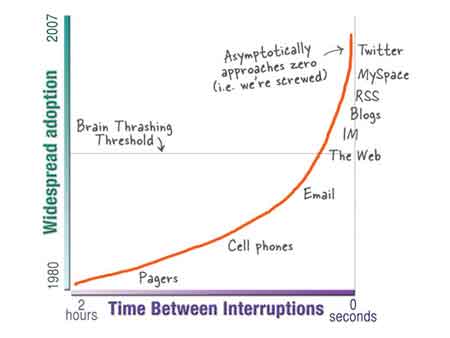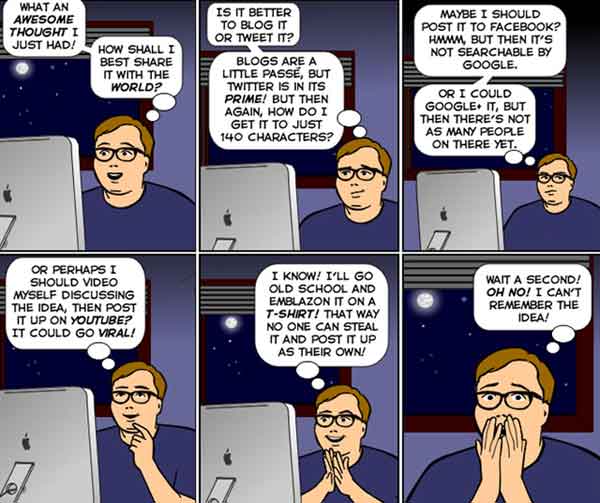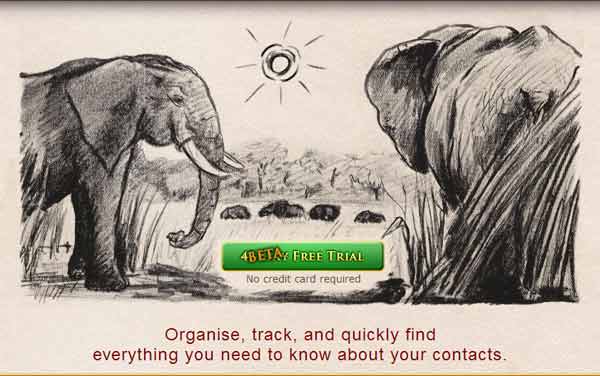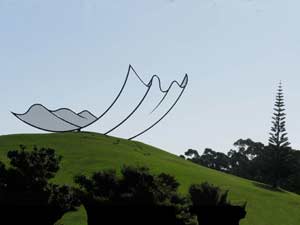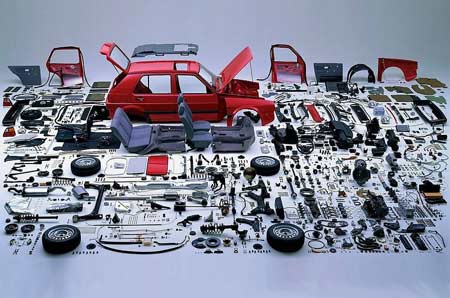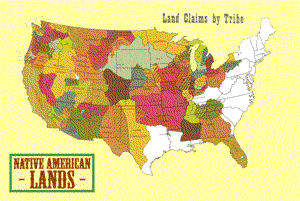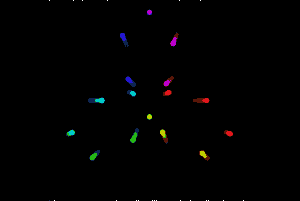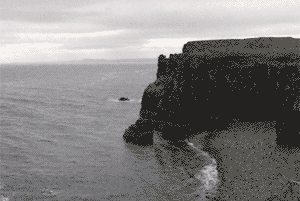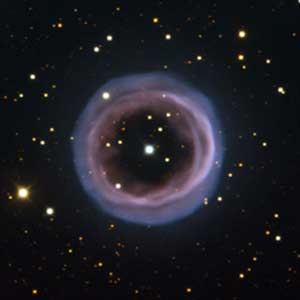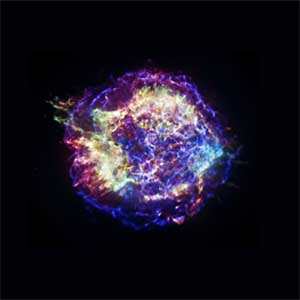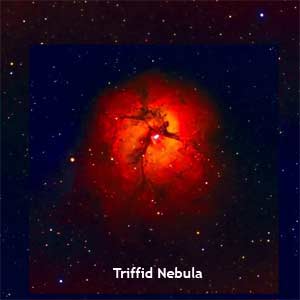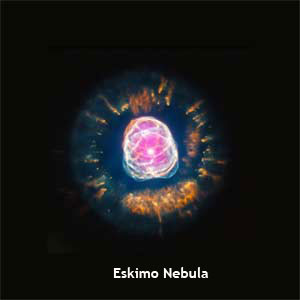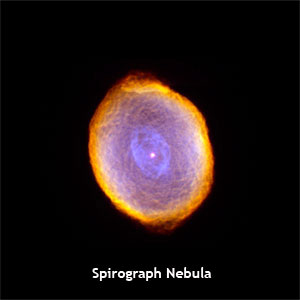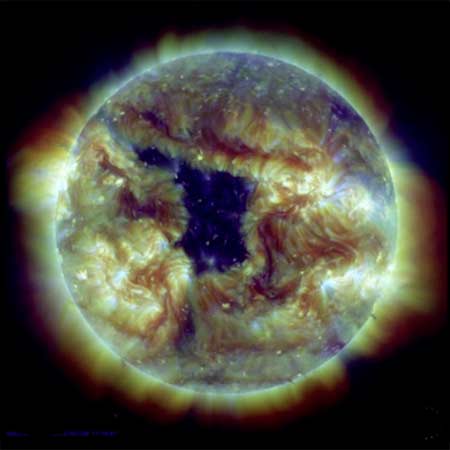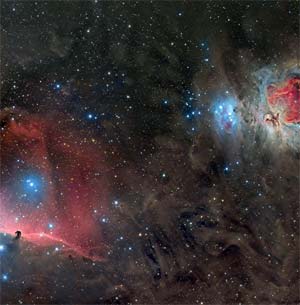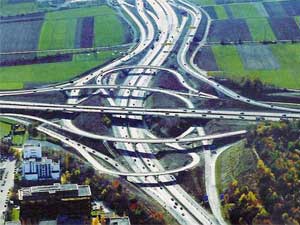If liberty means anything at all, it means the right to tell people what they don’t want to hear.
—Just a Click Away
July 14, 2014
So, What Seems to Be the Problem?
You arrive at your desk, ready for another day. Then it hits you — unfocussed overwhelming frustration. Your inbox already has over 100 unread emails and you haven’t even had your first cup of coffee.
The first recorded use of the phrase information overload was by the futurologist Alvin Toffler in 1970, when he predicted that the rapidly increasing amounts of information being produced would eventually cause people problems. This is because they’d have too much information to make rapid, informed decisions. He foresaw that massive amounts of historical information would need to be sifted (this was prior to Google and Bing searches), plus a high rate of new information would be added daily.
The problems with information include not just its quantity but also its quality: we can’t ascertain the validity of everything we read, or hear, or see, but to experience it is to tuck away some trace, to acquire it. Accumulated traces change us. We remember some of what we’ve read later, but no longer remember the source or the circumstances. We rewrite our memories when we remember them, so information we suspected at the time was unreliable, we may now think is likely true. One way to cope with this is to sample several news or knowledge summaries and go with the consensus. Or to join a group of people like us in some way and see how they seem to feel and accept that. Meanwhile, misinformation can build up, both in our heads and on the web. This phenomenon is termed information pollution. It’s worse today than in the past because the lowered cost of self-publishing means no one has validated a lot of what you read.
Today, it’s possible to process more information in one day than most of our ancestors did in their whole lives (unless they did a lot of travelling).
- 46 million mobile apps are downloaded from the Apple App Store each day.
- The average number of apps owned by a smartphone user is 41, a 28% increase since last year.
- The iOs App market sales run rate is $4 billion a year.
In his book The Shallows, former executive editor of the Harvard Business Review Nicholas Carr worries that the flood of digital information is changing not only our habits, but even our mental capacities. From the alphabet to maps, to the printing press, the clock, and the computer, our brains change in response to our experiences. The printed book serves to focus attention, promoting deep and creative thought. In stark contrast, the Internet encourages the rapid, distracted sampling of small bits of information from many sources. Forced to scan and skim to keep up, we diminish our ability to pay sustained attention, reflect deeply, or remember what we’ve learned. Greater access to knowledge is not the same as greater knowledge. Carr says that people become addicted to “mindlessly pressing levers in the hope of receiving a pellet of social or intellectual nourishment”. Can this situation be fixed? Should it be?
Technologist Clay Johnson advises the elimination of “push” or notifications, which he says pull people’s attention away from their work. He also advises that people stop using their smartphones as alarm clocks because then the phone is the first thing that people see when they wake up — so they often check their email right away and then stay hooked in all day.
Some cognitive scientists and graphic designers emphasise the distinction between raw information and organised information that we can actually use when thinking. In this view, information overload may be better viewed as an organisation / classification underload, suggesting that the problem is not so much the volume of information but the fact that we cannot discern how to use it well in the raw or biased form in which it is presented to us.
Why Isn’t Something Being Done?
So if information overload is such a problem, why don’t we do something about it? We could if we wanted, couldn’t we? “TMI” or Too Much Information is an acronym alluding to information overload but usually it’s used in jest as if too much information should just be ignored. Maybe that isn’t a bad idea. But how many people bother to tune their spam filters? How many turn off the little window that announces a new email? Who signs off social media because there’s just too much junk there? Who turns off smartphones in meetings to ensure no distractions? (They turn them to vibrate, maybe.)
Why do people make themselves so accessible? Possibly because there’s everlasting hope of something new and exciting coming along — something may arrive today that enlivens the mundane present. We don’t want to miss out on an email promising a new job, a text message offering a new relationship, or an RSS feed with exciting news. Every communication offers the frisson of a possible life-changing information event.
There’s also inertia. When did you last redefine the structure of your email folders or readjust your RSS feed? Whatever your information environment is today, it’ll likely be the same next month or even next year. Companies like it when people sign up for ongoing email broadcasts because they’re unlikely to take the time to unsubscribe.
Don’t undervalue your own attention. Don’t open junk mail; don’t watch junk television. Unfortunately, it takes an initial investment of attention to subsequently save attention. Most people just aren’t willing to invest because they don’t have enough upfront to spare before the payback kicks in.
Email remains a major source of information overload, as people struggle to keep up with the rate of incoming messages. As well as filtering out unsolicited commercial messages (spam), users also have to contend with the growing use of email attachments in the form of lengthy reports, presentations, and media files. Rather than responding to every email right away, users should delete unnecessary emails and then sort the remainder into action or reference folders first. Only then, begin the first reply.
In an office, the problem of information overload can spread like a virus. If one person is suffering from it, he or she tends not to process information being received very well. Rather than summarizing a report or document, it’s passed on whole to everyone else in the office. Now, the rest of the office must wade through 80 pages to find the few key pieces of information relevant to their jobs and the decisions they need to make. This is costly.
A Few Commonly-Proposed Suggestions
Our life is frittered away by detail…
simplify, simplify.
– Henry David Thoreau
- Have beginning-of-day and end-of-day rituals.
- Set up rules for times people can reach you. Periodically disconnect (whether you want to or not). This is because minds need a break — being focused for long periods of time is stressful. Focus should always be alternated with periods of relaxation. Build in “hidden moments” where you can be by yourself to mentally sift through what you’ve been reading or hearing and to distract yourself from troubling problems.
- Start your work day by making a short list of your most important tasks. Then don’t do anything else before doing the first thing on your short list — don’t check email, Facebook, Twitter, blogs, online forums, or news sites first.
- Regularly review your files (both hard and soft copies). Spend at least 10 minutes every day at this task. Toss or archive anything you no longer need.
- Only check your email a set number of times per day, at relatively fixed times, and for a maximum of 15 minutes each time. “Firewall” your attention.
- If you surf the Internet for research, set a timer (otherwise life can devolve into an unending search for still more wisdom). Each hour, stand up, take at least a couple of steps, and stretch. This is important for both physical and mental health.
- Stop multi-tasking for the sake of it and either single task or prioritize more efficiently. Try doing fewer things better. (Multitasking is not complexity.)
- Cut back on consuming information for the fun of it except during set-aside times.
- Take the time to remove your name from irrelevant lists.
- Get plenty of sleep; this helps you retain more of what you learn during the day.
- Use software that allows you to maximise your capabilities.
- Try to elicit a laugh at least once a day (if not from someone else, then from yourself).
Concentrate all your thoughts upon the work at hand.
The sun’s rays do not burn until brought to a focus.
– Alexander Graham Bell
This Is a New Thing, Right?
Complaints about information overload, usually couched in terms of the overabundance of books, have a long history — reaching back to Ecclesiastes 12:12 (“of making books there is no end,” probably from the 4th or 3rd century BC). The ancient moralist Seneca complained that “the abundance of books is distraction” in the 1st century AD, and there have been other info-booms from time to time — the building of the Library of Alexandria in the 3rd century BC, or the development of newspapers starting in the 18th century.
The printing press was first developed around 1453; Gutenberg’s new technology moved beyond the experimental phase by 1480 and spread to some two dozen major urban centres, plus there were other short-lived presses in operation from time to time. Contemporaries at first raved about the great speed with which books could be printed, and also about the drop in price — by 80% on one contemporary’s estimate in 1468. But around 1500, humanist scholars began to bemoan new problems: printers in search of profit, they complained, rushed to print manuscripts without attention to the quality of the text, and the sheer mass of new books distracted readers from the focus on the ancient authors most worthy of attention. Printers “fill the world with pamphlets and books that are foolish, ignorant, malignant, libellous, mad, impious and subversive; and such is the flood that even things that might have done some good lose all their goodness,” wrote Erasmus in the early 16th century, in the kind of tirade that might seem familiar to anyone exhausted by what they find online today.
In the 18th century the political theorist Montesquieu took notes on the backs of playing cards, which were blank in those days. His younger contemporary Carl Linnaeus made his own slips for recording the characteristics of plants, from which he created a taxonomic system still in use today. The slips, ordered and sorted, would eventually inspire both the index card and the library card catalogue, thus allowing data to be systematically categorised.
What we share with our ancestors is the sense of excess. Most Internet searches will turn up vastly more results than can be used. Too much of the bad stuff, not enough of the good, has been the subtext of complaints about overload from the beginning. But like the early modern compilers, we too are devising ways to cope. In some ways, our key methods of successfully coping with overload haven’t changed since the 16th century. We still need to select, summarise, and sort. For now, we need an element of human judgement (to refine the filtering) and human attention (to oversee the process).
Too Much Information, Too Little Concentration
For those people yet to hop on the Burnout Bandwagon, just a quick alert: there’s almost no room left. Everyone seems to be knee deep in burnout, whether socially or at work. Burnout is the new orange, and is often exacerbated by continual peer, customer, and superior surveillance. Furthermore, you can no longer read a column or check a score without being pitched, solicited or hit up for a “follow” or a “like”. Some sites launch full-on videos you can’t skip. It’s officially out of control.
What causes burnout?
- Lack of control: You have insufficient ability to influence decisions that affect your job — such as schedules, assignments, workload, or resources.
- Unstated job expectations: It is unclear the degree of authority you have or the expectations your superiors have.
- Dysfunctional workplace dynamics: You may have an office bully, undermining colleagues, or micromanaging boss.
- Value mismatch: You may not like their way of doing business or handling grievances.
- Poor job fit: Your interests and skills may not align.
- Extremes of activity: Your job may be monotonous. Or it may be chaotic.
- Lack of social support: You may be isolated, either at work or at home.
- Work-life imbalance: Your work may take a disproportionate amount of time and/or effort.
But read a few Schopenhauer essays from the mid-1800s. He was concerned that people were becoming more dehumanised, more distracted. He felt that virtually no one had enough time anymore. His gripe was far from novel, even then. See what’s happening as a repeating pattern. Evaluate your options. Adjust your attitudes. Seek support. Assess yourself. Exercise. Focus. Take regular breaks. Erect virtual partitions.
But it’s starting to become clear that the phenomenon of digital omnipresence is having a more pernicious effect than we’ve seen in past ages. We’re obsessed with the present tense like never before. More and more people report anxiety over things like in-boxes stuffed with unanswered emails. Others have trouble falling asleep after staring at an illuminated screen all day. We collectively suffer from a paralytic inability to voluntarily turn ourselves away.
Technology, for the most part, is neutral. It has no ulterior motivations of its own… yet. But humankind may, and therein lies the trouble. Most of us are born with the thought that life should be fair. And pleasant. Not out of our control. And what of those in whom the motives for justice, kindness, charity, and the like, do seem to appear? Whether conscious or not, the true motive is ulterior. Among other things, “it will help us to be generally popular and much will be forgiven us for it.” At virtually every waking moment we are host to one motive or another, even though the motive might sometimes be so faint as to be scarcely noticed. Moreover, as soon as one motive is satisfied, another immediately “pops up to take its place,” as though it had been lurking behind the scenes all the while, just waiting for opportunity. Human motives are hierarchically structured, and their arrangement within the hierarchy is defined by their respective levels of urgency / intensity / priority. If you want to reduce information coming your way, you can help at least a little.
Managing Information
Personal information management (PIM) refers to the activities people perform in order to acquire, organise, maintain, retrieve and use personal information items such as documents (paper-based and digital), web pages and communications for everyday use to complete tasks (work-related or not) and fulfil a person’s various roles (as parent, employee, friend, member of community, and so forth). There are 6 ways in which information can be personal: it is owned by you, it is about you, it is directed toward you, it was sent or posted by you, it was experienced by you, or even just that it is relevant to you.
One ideal of PIM is that people should always have the right information in the right place, in the right form, and of sufficient completeness and quality to meet the current need. Technologies and tools such as personal information managers help people spend less time with time-consuming and error-prone activities such as looking for information they know they have, just not where. They then have more time to make creative, intelligent use of the information they have at hand. Now, they can get more things done, or to simply just enjoy (re)acquainting themselves with information itself. (There’s an undeniable pleasure in learning, in knowing).
There are a number of tools available for managing personal information, but these tools can become a part of the problem, leading to “information fragmentation”. Different devices and applications often come with separate ways of storing and organising information. Integrating information from many different sources may cause more problems than it solves.
Personal information can include any of the following:
Personal file collections (digital and physical): documents, music, photos, videos and similar.
Personal notes / journal, address books, lists (including task lists).
Significant calendar dates (including birthdays and anniversaries, appointments and meetings).
Reminders and alerts.
Email, instant message archives, phone call notes and messages.
RSS / Atom feeds.
References (including scientific references, websites of interest).
Managing Relationships
The foregoing having been said, at this point I’d like to briefly mention my own attempts at managing data.
Customer relationship management (CRM) is an information industry term for methods, software and Internet capabilities that help people manage their relationships in an organised way and in sufficient detail. It allows the formation of individualised associations with others, with the idea of improving mutual satisfaction (it helps us to be popular, in other words). While the acronym CRM is most commonly used to describe a business-customer relationship, it’s also used to denote aids toward managing (prioritising, organising) business contacts, and clients. And it can do much more.
Organisations frequently look for ways to personalise online experiences. The biggest benefit most businesses realise when moving to a CRM system comes directly from having all important data stored and accessed from a single location. Before CRM systems, it was spread out: documents, emails, mobile phone data, sticky notes, and even index cards and Rolodex entries. Storing it all in a central location (ideally in the cloud) gives everyone with a need to know immediate access when they need it. Collaborations are easier, and CRM systems help one to develop efficient, improved business processes and systems for identifying, targeting, acquiring, and retaining the best mix of information to have on-hand.
Customer-centric relationship management (CCRM) is a style of customer relationship management that focuses on customer preferences instead of customer leverage. This is a nascent sub-discipline of traditional customer relationship management; to take advantage of changes in communications technology. Customer centric organisations help customers make better decisions and this also helps drive profitability. A CCRM adds value by engaging customers in individual, interactive relationships. It allows tailored marketing, one-on-one customer service, boosting loyalty, and providing what customers actually want.
A CRM fundamentally involves treating contacts differently based on the assumption that each is different from the others and has unique benefits and requirements.
Now, I need something from you.
We developed Elephant CRM initially to help our company manage its own data and relationship needs. We liked the result enough that we decided to take it to market. I’m not trying to sell anything — right now, our software is free. What I need is a few people who will look it over, maybe try it out, and give me their opinions. Is it intuitive? Easy or hard to use? Is the documentation adequate? Is there something missing that should be there?
What Elephant mostly does is manage relationships. You can define any association type you like (works for, owns stock in, is divorced from, plays tennis every Tuesday morning with, or what have you) and a connection is made and propagated to the record of both of the involved parties. Furthermore, you can send yourself reminders that only you can see (that drop off after they email you on the date and time you set). You can leave notes to yourself that only you can see on almost every part of every record — or you can let everyone else (other users of your own CRM) see some or all of them.
We think it can be used as a personal information manager or as a customer relationship manager. Do you agree?
Like a lot of start-ups, we produced a more richly-featured version of the quick-and-dirty programme we wrote for ourselves to keep track of our own company’s relationships. Elephant has proven to be a usefully flexible platform. We think you will like it. There’s a short User’s Manual on the forum page if you need it. You can also visit the sandbox page where there are 5 sample CRMs: an American animation / design shop; a Canadian school district’s substitute teacher roster; a movie script; an off-world performing arts complex; and the Faraday family’s household records.
ANY comments, both positive and negative, would be very helpful. If you like the software, you’re free to keep using it.
Thanks.
Sources
“A H Maslow’s Vision of Human Nature” by Richard Lowry, adapted from the Editor’s Introduction to the 3rd edition of Maslow’s Toward a Psychology of Being, New York: Wiley, 1999, date of this article undenoted, http://faculty.vassar.edu/lowry/maslow1.html
“CRM (customer relationship management)” by Margaret Rouse, TechTarget, no date given, http://searchcrm.techtarget.com/definition/CRM
“CRM – Customer Relationship Management”, Webopedia, http://www.webopedia.com/TERM/C/CRM.html
“Customer Relationship Management”, Wikipedia, http://en.wikipedia.org/wiki/Customer_relationship_management
“Dealing with information overload: The art of letting go” by Jane Genovese, Learning Fundamentals, 15 Jan 2014, http://learningfundamentals.com.au/blog/dealing-with-information-overload-the-art-of-letting-go/
“Developing Razor Sharp Focus with Zen Habits Blogger Leo Babauta” by Jane Genovese, Learning Fundamentals, 22 July 2011, http://learningfundamentals.com.au/blog/developing-razor-sharp-focus-with-zen-habits-blogger-leo-babauta/
Focus: A Simplicity Manifesto in the Age of Distraction by Leo Babauta, http://focusmanifesto.s3.amazonaws.com/FocusFree.pdf
“How To Control Information Overload Before It Controls You” by Lisa Rickwood, Par Excellence Magazine, no date given anywhere, http://www.parexcellencemagazine.com/motivation-and-self-improvement/how-to-control-information-overload-before-it-controls-you.html
“Information Overload” by Chris Nickson, Life in the Fastlane, 8 July 2009 rev. 5 July 2014, http://lifeinthefastlane.com/information-overload/
“Information Overload”, Wikipedia, http://en.wikipedia.org/wiki/Information_overload
“Information Overload, the Early Years” by Ann Blair, Today’s Globe, 21 October 2010, http://www.boston.com/bostonglobe/ideas/articles/2010/11/28/information_overload_the_early_years/?page=full
“Job Burnout: How to spot it and tale action” by Mayo Clinic Staff, Adult Health, Healthy Lifestyle section, 8 December 2012, http://www.mayoclinic.org/healthy-living/adult-health/in-depth/burnout/art-20046642
“Personal Information Management”, Wikipedia, http://en.wikipedia.org/wiki/Personal_information_management
“Personal Information Manager”, Wikipedia, http://en.wikipedia.org/wiki/Personal_information_manager
The Shallows: What the Internet Is Doing to Our Brains by Nicholas Carr, W W Norton & Company, 2011.
“Streaming Burnout” by Alex Lyras, Lyrasisms, 2 June 2014, http://03258d8.netsolhost.com/WordPress/?p=3895
“There’s an App for Everything, Including YouTube’s Capture” by Beth Ruth, Now You Know: Emerging Media & the Market, 17 December 2012, http://bruth5112.wordpress.com/2012/12/17/theres-an-app-for-everything-including-youtubes-capture/
“Understanding Information Overload” by N Ingebrigtsen, Infogineering: Surviving and Thriving in the Age of Information Overload, no date given, http://www.infogineering.net/understanding-information-overload.htm
“Why We Don’t Care about Information Overload” by Tom Davenport, Harvard Business Review, 8 December 2009, http://blogs.hbr.org/2009/12/why-we-dont-care-about-informa/
The Distillery
Just Illusions
- The Cut Chair provides a place to sit, but creates an optical illusion that tells you otherwise. A plate concealed by a thick carpet allows a robust cantilevered seat. Three well placed leg “stumps” and the chair now looks as though it has just been magically sliced apart. Purchase price US$5,000. Artist Peter Bristol.
- This welded and painted steel aculpture is by artist Neil Dawson. It’s located on Gibbs Farm, Kaipara Harbour, New Zealand. It was made in 1994 and is 15 metres by 10 metres by 36 metres tall. Visit Gibbs Farm if you can — it’s spectacular.
- Born in 1993, Hikaru Cho currently lives in Tokyo. She creates art, lots of it. Her work includes body painting, stopmotion movies, illustrations, clay sculptures, clothing design, character design, and more. She is currently a student at Musashino Art university. The bottom row of photographs are all Cho’s work as well, all done with acrylic paint.
The Devil’s in the Details
- I don’t know what kind of car this is nor who went to the trouble to lay out all the parts. Whatever. Very good job.
- Sometimes things can go so very wrong. Click on the photo for the complete picture.
GIF Trio
- To better understand land cession maps made by geography and anthropology professor Sam Hilliard (Louisiana State University), Tumblr user Sunisup created an animation showing dates and land occupied by Native American tribes beginning in 1784. This map is a bit more current, made in 1996.
- Each of the dots actually moves in a straight line only.
- Bon Voyage.
Supernova Remnants and Nebulae
- This image of the debris of an exploded star — known as supernova remnant 1E 0102.2-7219, or “E0102” — features data from NASA’s Chandra X-ray Observatory. E0102 is located about 190,000 light years away in the Small Magellanic Cloud, one of the nearest galaxies to the Milky Way. It was created when a star that was much more massive than the Sun exploded, an event that would have been visible from the Southern Hemisphere of Earth over 1,000 years ago. The lowest-energy X-rays are coloured orange, the intermediate range of X-rays is cyan, and the highest-energy X-rays Chandra detected are blue. An optical image from the Hubble Space Telescope shows additional structure in the remnant and reveals foreground stars in the field.
- This is an unusual planetary nebula formed when its dying star, having expanded into a red giant phase, expels a shell of gas as it evolves into a white dwarf. Most planetary nebulae are either spherical or elliptical in shape, or bipolar (featuring two symmetric lobes of material), but this one looks like an almost perfect circular ring. Astronomers think this progenitor star is actually a binary system, orbiting with a period of 2.9 days. The binary pair is almost perfectly face-on from our vantage point, so that we’re looking down on a torus of ejecta. The image is approximately 200 arcseconds across.
- One of the most famous objects in the sky is the Cassiopeia A supernova remnant. Scientists have combined data from Chandra, NASA’s Spitzer Space Telescope, and ground-based facilities to construct a unique 3D model of the 300-year old remains of a stellar explosion that blew a massive star apart, sending the stellar debris rushing into space at millions of miles per hour. This will aid astronomers in their efforts to reconstruct details of the supernova process such as the size of the star, its chemical makeup, and the explosion mechanism. Low-energy X-rays are red, medium-energy ones are green, and the highest-energy X-rays detected are blue.
- The Trifid Nebula (NGC 6514) is located in Sagittarius. Its name means 'divided into 3 lobes’. The nebula has a finger-like stalk to the left, a prominent example of evaporating gaseous globules, or 'EGGs’. The stalk has survived because its tip is a knot of gas that is dense enough to resist being eaten away by the powerful radiation from the star (the bright white spot just to the immediate left of the red cloud). Triffid is approximately 5,000 light years away from Earth.
- Stars like the sun can become remarkably photogenic at the end of their lives. A good example is NGC 2392, which is located about 4,200 light years from Earth. Nicknamed the “Eskimo Nebula”, this planetary nebula (so-called because these objects looked like planetary disks to earlier astronomers using small optical telescopes) formed when its star used up all its hydrogen — an event our sun will go through in about 5 billion years. The star begins to cool and expand, increasing its radius by 10s to 100s of times its original size. Eventually, the outer layers are carried away by a 50,000 kilometre-per-hour wind, leaving behind a hot core. Eventually the remnant star will collapse to form a white dwarf. This nebula has unusually high levels of X-ray emissions leading researchers to deduce that there is an unseen companion to the hot central star.
- Glowing like a multi-faceted jewel, the planetary nebula IC 418 lies about 2,000 light-years from Earth in the constellation Lepus. In this picture, the Hubble telescope reveals some remarkable textures weaving through the nebula. Their origin, however, is still uncertain.
- This image shows the remnant of Supernova 1987A seen in light of very different wavelengths. Atacama Large Millimeter/submillimeter Array (ALMA) data (in red) shows newly-formed dust in the centre of the remnant. Hubble (in green) and Chandra (in blue) data show the expanding shock wave.
- The Medusa nebula, known scientifically as Abell 21, is an old planetary nebula some 1,500 light-years away in the constellation Gemini. It’s estimated to be over 4 light-years across. It was originally discovered in 1955 by UCLA astronomer George Abell, who classified it as an old planetary nebula. The braided serpentine filaments of glowing gas suggests the serpent hair of Medusa found in ancient Greek mythology. Until the early 1970s, the Medusa was thought to be a supernova remnant but astronomers in 1971 concluded that it was most likely a planetary nebula. As the nebula is so big, its surface brightness is very low. Because of this most websites recommend at least an 8-inch (200 millimetre) telescope to find this objec.
- The Ring Nebula is about 2,000 light-years away in the constellation Lyra. In this composite image, visible-light observations by NASA’s Hubble Space Telescope are combined with infrared data from the ground-based Large Binocular Telescope in Arizona to assemble a dramatic view of the well-known Ring Nebula. Called a planetary nebula, the Ring Nebula is the glowing remains of a sun-like star. The object is tilted toward Earth so that astronomers see the ring face-on. The Hubble observations reveal that the nebula’s shape is more complicated than astronomers thought. The blue gas in the nebula’s centre (helium) is actually a football-shaped structure that pierces the red doughnut-shaped material (hydrogen). The green material is oxygen. The very faint, scallop-shaped red material surrounding the ring was expelled by the star during the early stages of nebula formation. Once a star consumes all of its hydrogen, it expands to a red giant. The bloated star then expels its outer layers, exposing its hot core. Ultraviolet radiation from the core illuminates the discarded material, making it glow. The smoldering core, called a white dwarf, is the tiny white dot in the centre. The nebula measures roughly one light-year across.
Looking at the Sun
- This still image was taken from a new NASA movie of the sun based on data from NASA’s Solar Dynamics Observatory, or SDO, showing the wide range of wavelengths –- invisible to the naked eye -– that the telescope can view. SDO converts the wavelengths into an image humans can see, and the light is colourised. Yellow light of 5,800 Angstroms, for example, generally emanates from material of about 10,000°F (5,700°C), which represents the surface of the sun. Extreme ultraviolet light of 94 Angstroms, which is typically colourised in green in SDO images, comes from atoms that are about 11,000,000°F (6,300,000°C) and is a good wavelength for looking at solar flares, which can reach such high temperatures. By examining pictures of the sun in a variety of wavelengths, scientists can track how particles and heat move through the sun’s atmosphere.
- An extensive coronal hole rotated towards Earth over several days in May 2013. The massive coronal area is one of the largest seen. Coronal holes are the source of strong solar wind gusts that carry solar particles out to our magnetosphere and beyond. They appear darker in extreme ultraviolet light images (here, a combination of three wavelengths of UV light) because there’s less matter at those temperatures. Solar wind streams take 2-3 days to travel from the Sun to Earth, and the coronal holes in which they originate are more likely to affect Earth after they’ve rotated more than halfway around the visible hemisphere. They frequently increase auroras on Earth.
The Most Famous Horse’s Head
- To the left, one of the 3 stars in Orion’s Belt, Alnitak, is the bright blue star above the Horsehead Nebula. Over on the right of the image is the gorgeous Orion’s Nebula, visible to the naked eye as the middle star in Orion’s sword. Both nebulae and the surrounding gas and dust are among the hottest regions of star formation that can be seen in the night sky. All of these objects have been studied for centuries, yielding insight in modern times into the life cycles of stars.
- This exceptional image of the Horsehead nebula was taken at the National Science Foundation’s 0.9-meter telescope on Kitt Peak with the NOAO Mosaic CCD camera. Located in the constellation of Orion, the Hunter, the Horsehead is part of a dense cloud of gas in front of an active star-forming nebula known as IC434. The nebulosity of the Horsehead is believed to be excited by a nearby bright star. The streaks in the nebulosity that extend above the Horsehead are likely due to magnetic fields. Stars in the lower half of the image are obscured by a dark cloud of hydrogen gas. The edge of this large cloud is the horizontal strip of glowing gas that bisects the image. The Horsehead is located about 1,600 light-years away from Earth. The area shown in this image is quite large in the sky, covering about 5 times the area of the full moon.
- Astronomers have used NASA’s Hubble Space Telescope to photograph the iconic Horsehead Nebula in a new, infrared light to mark the 23rd anniversary of the famous observatory’s launch aboard the space shuttle Discovery in 1990. Looking like an apparition rising from whitecaps of interstellar foam, the iconic Horsehead Nebula has graced astronomy books ever since its discovery more than a century ago. The nebula is shadowy in optical light but appears transparent and ethereal when seen at infrared wavelengths. Hubble continues to produce ground-breaking science, having benefitted from a slew of upgrades from space shuttle missions, including the 2009 addition of the high-resolution Wide Field Camera 3 that took this new portrait of the Horsehead.
Lists
Reasons to Love New Jersey 21 October 2011
1. Cheese fries. (Try cheese fries with gravy.)
2. It’s 10 minutes to a mall from anywhere (until Christmas, then it may be 30 minutes).
3. Gasoline is pumped by friendly attendants. (It’s civilised. Only Oregon in the USA has a similar sense of class.)
4. The Statue of Liberty is actually located on an island that the Supreme Court ruled was part of New York City, though it’s completely surrounded by the municipal borders of Jersey City, making it an enclave.
5. NJ has the most guys named Tony and the most girls named Tina.
6. NJ was invaded by Mars.
7. The Army tests secret weapons in NJ. (Maybe because of that Martian thing?)
8. Samuel Colt made the first revolver in NJ. (You feeling lucky, Punk?)
9. A lot of Nobel prizes have been earned by people living in Jersey. Princeton has 35 alone. (See? Some people who’ve lived in NJ are smart.)
10. Valium was invented in NJ (maybe 0because they needed it to drive on the Turnpike).
Facts about the Human Body
1. Testicles manufacture 10 million new sperm cells each day, enough that a man could repopulate the Earth in only 6 months! (No women even needed?)
2. Human bone is as strong as granite in supporting weight. A block of bone the size of a matchbox can support 9 tonnes — 4 times as much as concrete.
3. In 30 minutes, the average body gives off enough combined heat to boil 2 litres of water.
4. A foreskin the size of a postage stamp from a circumcised baby takes only 21 days to grow enough to cover 3 basketball courts. Laboratory-grown skin is used to treat burns.
5. Female ovaries contain nearly 500,000 egg cells, yet only 400 or so will mature.
6. In a lifetime, you’ll make enough saliva to fill two Olympic pools (about 25,000 quarts).
7. You can survive without most of your internal organs: stomach, spleen, almost every organ around the pelvis and groin, one lung, one kidney, 75% of your liver and 20% of your intestine.
8. If the human eye were a digital camera, it would have 576 megapixels.
9. 50% of human DNA is same as in a banana.
10. Each kidney contains 1 million individual filters which clean an average of 1.3 litres (2.2 pints) of blood per minute, expelling up to 1.4 litres (2.5 pints) of urine a day.
Incendiary Facts About Incest
1. A recent study found that couples who have the most genetic similarities also have the lowest sexual satisfaction. Women who were partnered with genetically similar mates were more likely to cheat on their husbands. These studies suggest that genes can not only influence mate choice but determine overall satisfaction with a partner.
2. Like humans, many creatures have evolved to form their own anti-incest mechanisms, either by migrating away from their homes or using various cues to identify their kin. Female lemurs, for instance, can tell if a male’s genes are too similar to her own by smelling the pheromones that emit from his genitals.
3. Because hyenas don’t use scent or other cues to identify relatives, females only mate with males that are new to their group. This preference for the “new guy” forces young male hyenas to leave their families upon adulthood in search of a pack of unrelated females, resulting in low levels of inbreeding among the species.
4. Most living things benefit from genetic diversity when breeding, including plants, which have developed their own mechanisms to prevent self-pollination. Many plants are hermaphroditic, meaning they have both male and female reproductive organs, which makes it easy to self-pollinate. To prevent this, some plants, such as petunias and tobacco plants, have evolved to develop what scientists have dubbed the “self-incompatibility” strategy.
5. As a part of this strategy, some plants can identify their own pollen once it has entered the female reproductive organ (called the “pistil”) and destroy it before fertilisation occurs using a toxin called S-RNase. Though the S-RNase is produced even when genetically diverse pollen has entered the pistil, the plant prevents the destruction of viable pollen by withholding the toxin until it has identified the pollen as either compatible or incompatible.
 Animals
Animals Animation
Animation Art of Playing Cards
Art of Playing Cards Drugs
Drugs Education
Education Environment
Environment Flying
Flying History
History Humour
Humour Immigration
Immigration Info/Tech
Info/Tech Intellectual/Entertaining
Intellectual/Entertaining Lifestyles
Lifestyles Men
Men Money/Politics/Law
Money/Politics/Law New Jersey
New Jersey Odds and Oddities
Odds and Oddities Older & Under
Older & Under Photography
Photography Prisons
Prisons Relationships
Relationships Science
Science Social/Cultural
Social/Cultural Terrorism
Terrorism Wellington
Wellington Working
Working Zero Return Investment
Zero Return Investment